iPhone 14 vs iPhone 14 Plus: here's how they compare
The iPhone 14 and 14 Plus share a lot, but there are still some differences to know about
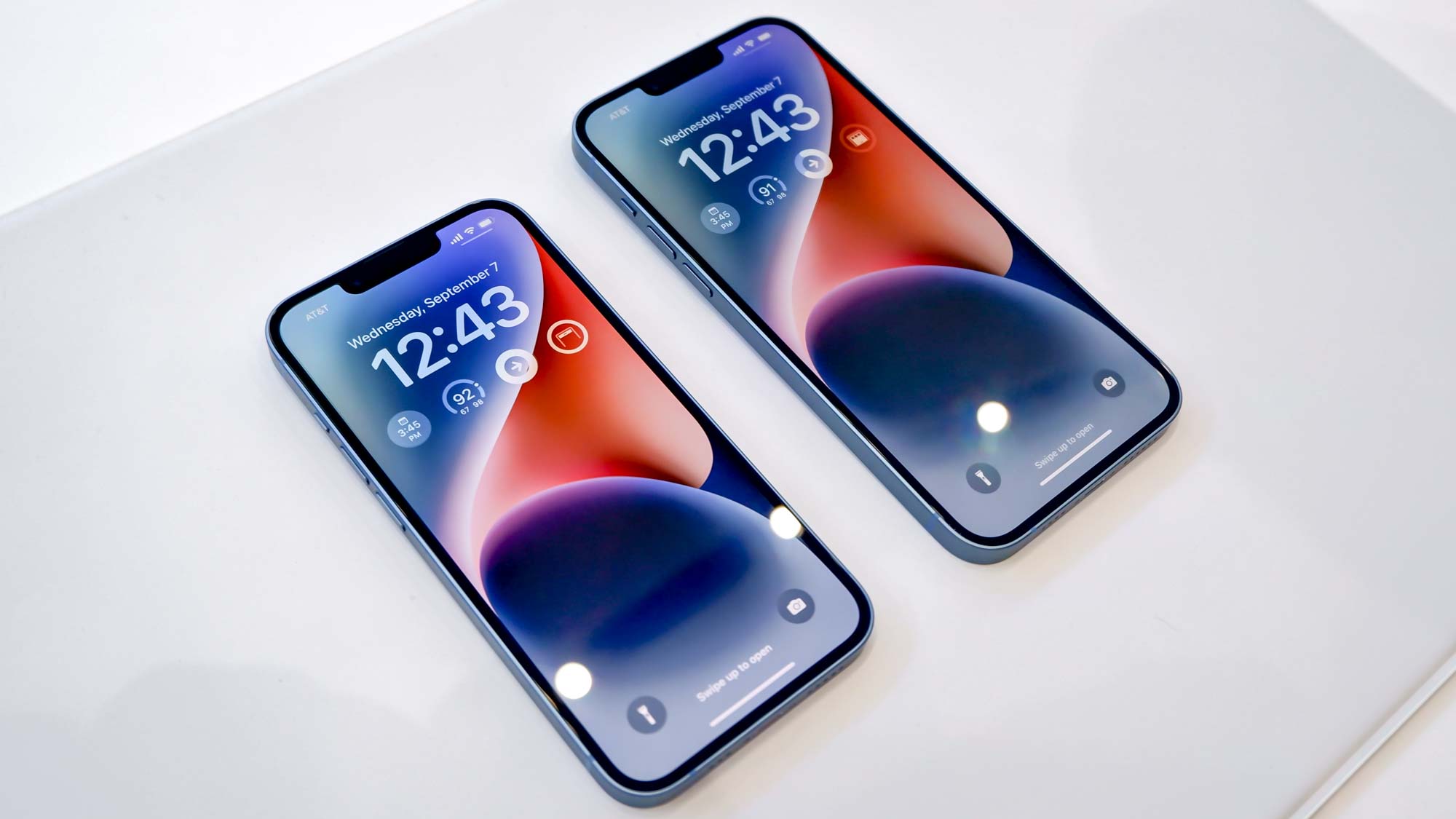
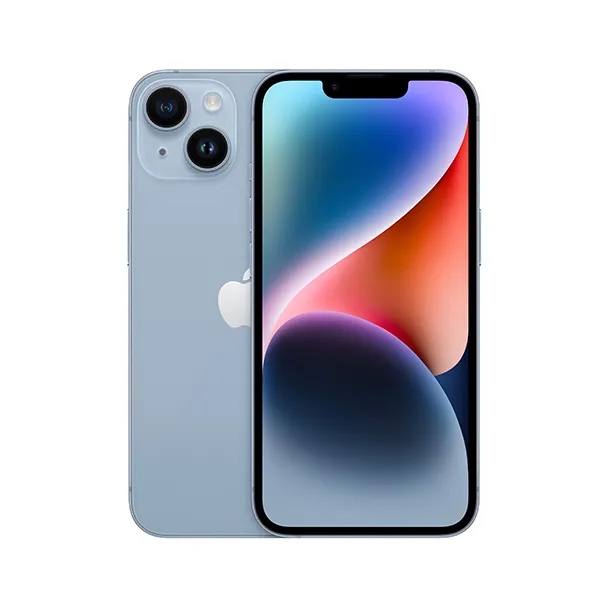
The standard iPhone 14 is one of the best value iPhones you can currently grab. While it might not have Apple Intelligence, you are getting an enhanced chipset and photo/video improvements. But without a higher display refresh rate or optical zoom camera, it's still lacking features its rivals have offered for years.
For
- Excellent cameras
- Vibrant display
- Fast A15 Bionic performance
- Impressive Action mode video
Against
- Still just 60Hz refresh rate
- No optical zoom
- Lack of SIM card slot will annoy some
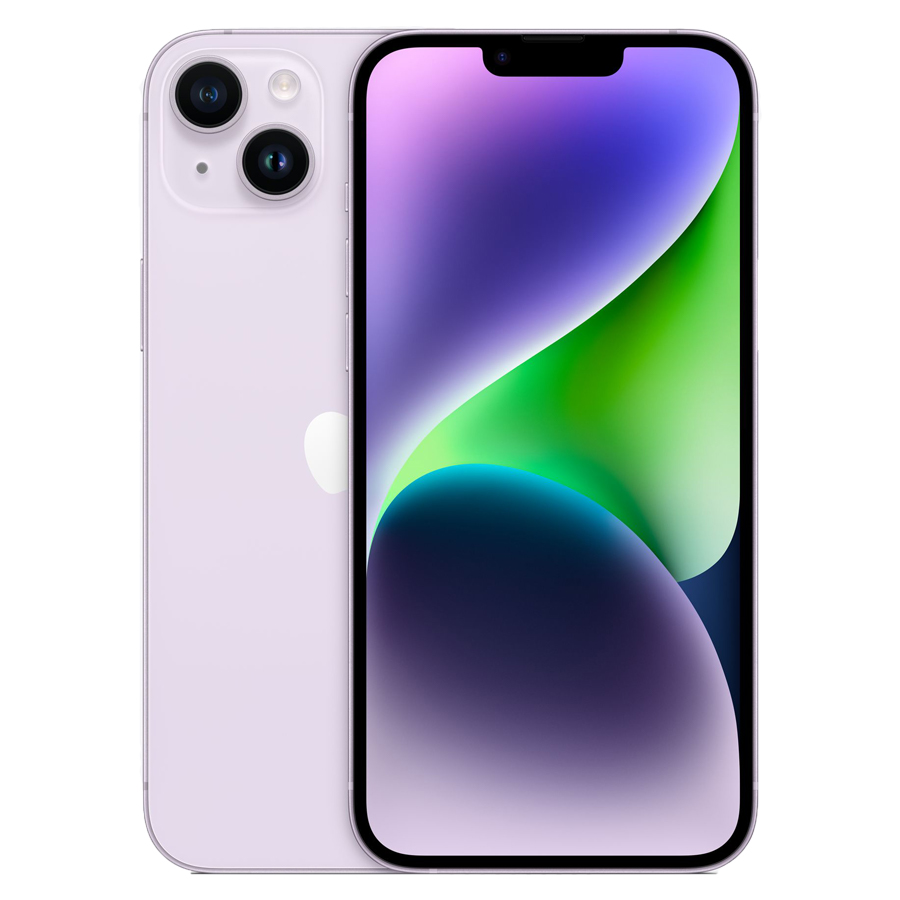
With a larger display and battery, the iPhone 14 Plus offers part of what makes the iPhone 14 Pro Max so good, but without the expensive pro-grade features. Unfortunately, that also means it falls behind equivalent Android phones at the same price, just like its baby sibling.
For
- Big screen for a good price
- Long battery life
- Great cameras with Action mode video
- Strong performance
- Lightweight design
Against
- Lacks 120Hz display
- No telephoto lens
- Charging could be faster
Even in 2025, the iPhone 14 and iPhone 14 Plus could still be phones worthy of consideration if you're wanting to avoid splashing out on Apple's latest and greatest.
The basic iPhone 14 and the larger iPhone 14 Plus share several specs, but the size difference affects several important aspects like the display, battery size and overall price. While Apple has since launched the iPhone 15 and iPhone 15 Plus, and most recently the Apple Intelligence-ready iPhone 16 and iPhone 16 Plus, the two iPhone 14 models are still easily available to buy, and at a tasty discount from their original prices.
If you need help deciding which generation of iPhone is right for you, we have face-offs between iPhone 15 vs. iPhone 14 and iPhone 16 vs. iPhone 14 to help. But if it's an iPhone 14 you want, and it's purely a case of regular or Plus, this is the guide you need.
iPhone 14 vs iPhone 14 Plus: Specs
| Row 0 - Cell 0 | iPhone 14 | iPhone 14 Plus |
| Starting price | $599 (as of September '24) | $699 (as of September '24) |
| Screen size | 6.1 inches | 6.7 inches |
| Refresh rate | 60Hz | 60Hz |
| CPU | Apple A15 Bionic | Apple A15 Bionic |
| Storage | 128GB, 256GB, 512GB | 128GB, 256GB, 512GB |
| Cameras | Dual 12MP (Wide, ultrawide) | Dual 12MP (Wide, ultrawide) |
| Size | 5.78 x 2.82 x 0.31 inches | 6.33 x 3.07 x 0.31 inches |
| Weight | 6.07 ounces | 7.16 ounces |
| Colors | Purple, blue, midnight, starlight, Product RED | Purple, blue, midnight, starlight, Product RED |
iPhone 14 vs iPhone 14 Plus: Price
The standard iPhone 14 was originally priced at $799 (£849/AU$1,399) and the new iPhone 14 Plus a little more at $899 (£949/AU$1,579). But when the iPhone 15 and iPhone 15 Plus arrived, these prices dropped to $699 and $799 respectively. And more recently with the launch of the iPhone 16 and iPhone 16 Plus, the prices of the iPhone 14 and iPhone 14 Plus dropped again to $599 and $699.
Since the iPhone 14 offers only a smaller display and battery compared to the iPhone 14 Plus. As such, the smaller phone arguably offers superior value unless you really want the largest possible screen and power cell.
iPhone 14 vs iPhone 14 Plus: Design and display
Size is the biggest iPhone 14 vs iPhone 14 Plus difference: the iPhone 14 will have a 6.1-inch display, while the iPhone 14 Plus gets a larger 6.7-inch display. Accordingly, the iPhone 14 weighs just over 6 ounces, while the iPhone 14 Max tips the scales at a little over 7 ounces.
But that aside, the phones don't differ much physically, and both mirror the shape and proportions of the iPhone 13 and iPhone 13 Pro Max that came before.
The iPhone models get aluminum frames with glossy backs. And like with the previous gen iPhones, the iPhone 14 and 14 Max are IP68 water and dust resistant and have the Lightning port for charging. They're the last iPhones with this port as the iPhone 15 and later have moved to the more common USB-C port.
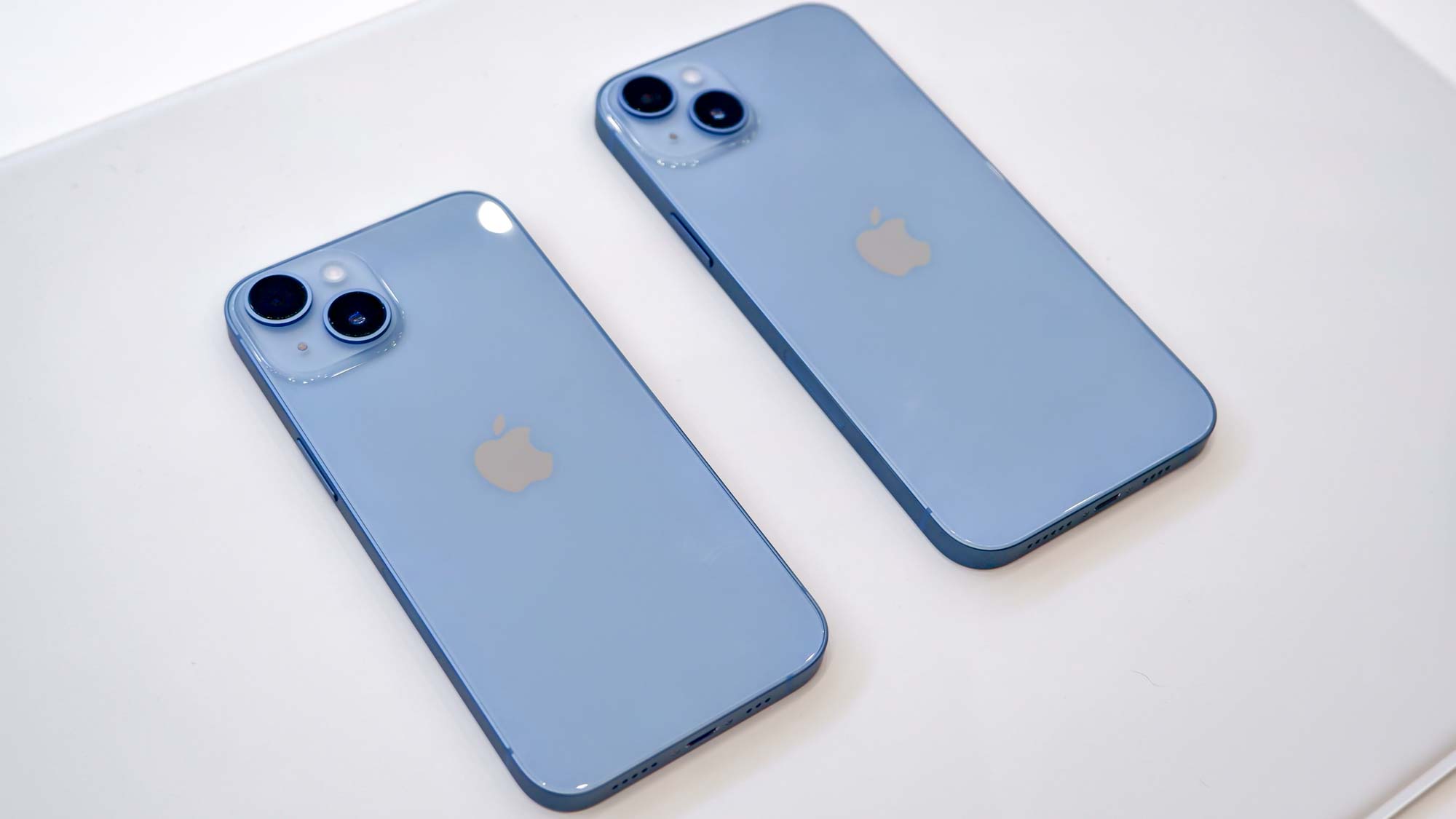
The iPhone 14 and iPhone 14 Plus stick with the same notch as the iPhone 13 series, which means it will very much be there but 25% smaller than the iPhone 12. The iPhone 14 Pro and Pro Max have gotten rid of the full notch and have a pill-shaped cut-out for Face ID and the front camera instead.
In terms of display, the phones have skipped Pro Motion, which Apple has again reserved for the Pros. They instead have 60Hz, which is behind the times for most Android phones but won't be noticeable if you're coming from any iPhone other than a 13 Pro or 13 Pro Max or later Pro iPhone.
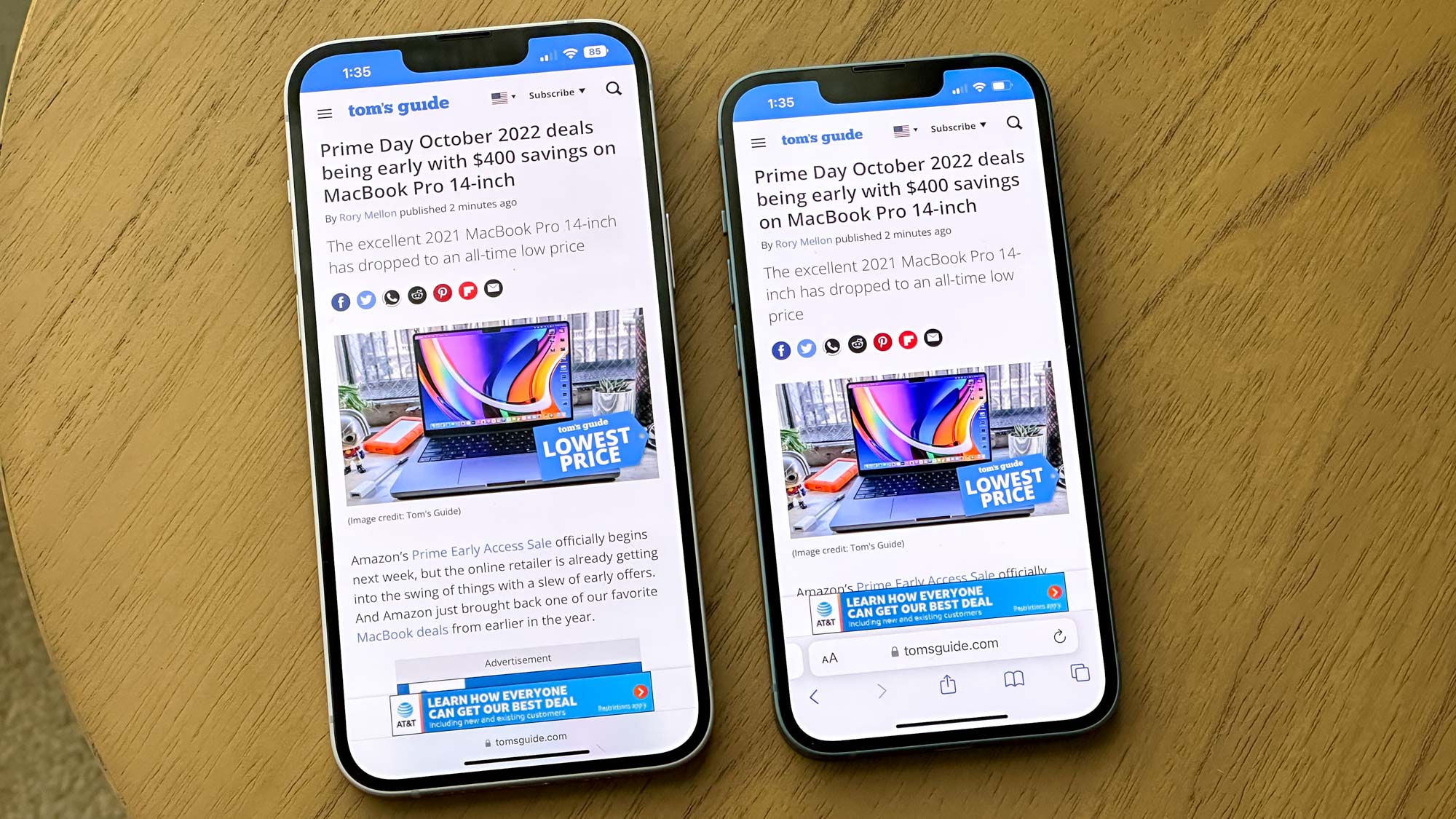
They're very similar in our display tests as well. Whether it's color gamut, color accuracy or average brightness, the iPhone 14 and iPhone 14 Plus perform within a couple of percentage points of one another. The only difference was during our HDR brightness tests, during which the iPhone 14 Plus is noticeably brighter.
| Row 0 - Cell 0 | iPhone 14 | iPhone 14 Plus |
| Peak brightness (nits) | 758 | 764 |
| Peak HDR brightness (nits) | 756 | 1,100 |
| DCI-P3 color gamut coverage (%) | 83.1 | 85.4 |
| Color accuracy (∆e, lower is better) | 0.25 | 0.25 |
Both phones offer the same set of colors to pick from. The original options are Starlight, Midnight, blue, purple, and Product RED, while a new yellow option debuted in spring 2023.
iPhone 14 vs iPhone 14 Plus: Cameras
The iPhone 14 and iPhone 14 Plus share camera hardware. That includes two 12MP cameras on the back, serving main and ultrawide purposes, and another 12MP camera on the front for your selfie-taking needs. There's no telephoto camera or 48MP main sensor though, as those are Pro exclusives.
One new feature that you won't find on previous iPhones is the Photonic Engine. This is Apple's fancy name for a new image processing pipeline that focuses on getting better low-light shots.
iPhone 14 vs iPhone 14 Plus: Performance
The iPhone 14 and iPhone 14 Plus gave stuck with the 2021 A15 Bionic chip to power them. Apple decided to give only the iPhone 14 Pro and iPhone Pro Max the new A16 Bionic chip.
The same chip does mean similar power for the iPhone 14 and iPhone 14 Plus, although both have an extra GPU core and improved cooling compared to the iPhone 13, meaning a slight performance bump even with the same silicon.
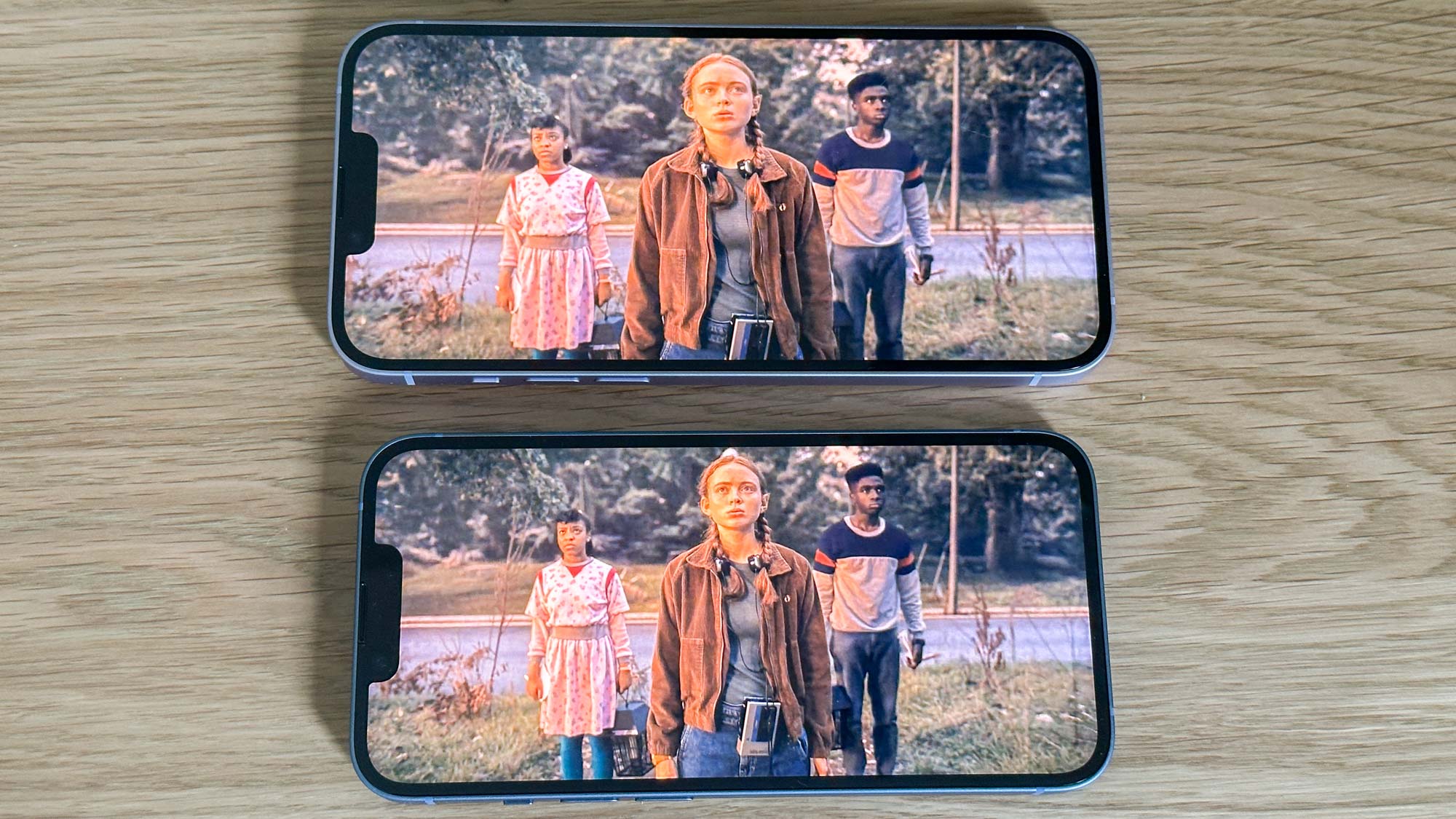
In our iPhone 14 benchmarks, the iPhone 14 and iPhone 14 Plus scored very similarly, as you'd expect from two phones with the same chip and RAM. The iPhone 14 Plus does seem to have an edge in some areas though, perhaps due to improved cooling thanks to its larger body.
Apple also gave both phones the same new safety features - Crash Detection and satellite-powered Emergency SOS. Hopefully, you'll never need to automatically notify someone you've been in a vehicle collision or have gotten lost somewhere in the wilderness, but either of these phones will help you with that.
And what about storage space? Both phones offer the same there too, with capacities of 128GB, 256GB and 512GB.
For software, the two phones originally came with iOS 16 pre-installed. Both are eligible for an upgrade to iOS 18, first made available to the public in September 2024. Although neither will receive any of the Apple Intelligence-branded features Apple has started to launch as of iOS 18.1. But non-AI features like the improved home screen customization or the Apple Invites app are available.
iPhone 14 vs iPhone 14 Plus: Battery
This is where the difference between the two phones gets interesting. The iPhone 14 Plus lives up to its name and max out on the battery front, getting ahead of the iPhone 14.
The average battery life for the iPhone 14 during our testing (using a custom test to continuously browse the internet over 5G) was 9 hours and 28 minutes. The iPhone 14 Plus lasted 11 hours and 57 minutes, an excellent result.
As you might expect, the battery size gap between the two phones has an impact on charging speed. Using Apple's 20W charger, the iPhone 14 charged to 54% in half an hour, and the iPhone 14 Plus charged to 46%.
iPhone 14 vs iPhone 14 Plus: Bottom line
There's not a big gap between the iPhone 14 and iPhone 14 Plus. But there's enough to make it worth considering carefully which phone you're better off using.
In a nutshell, the two phones differ in size, battery life and price. The iPhone 14 Plus arguably outshines the iPhone 14 overall by offering a big-screen iPhone experience for a more affordable price than a Pro Max. But since it doesn't offer a lot more than the regular iPhone 14, maybe the smaller handset will still provide the best bang for your buck.
While both of these models are cheaper two years after launching, the newer iPhone 15, iPhone 15 Plus, iPhone 16 and iPhone 16 Plus have made improvements that could be worth the extra cash. Check our iPhone 15 vs. iPhone 14 and iPhone 16 vs. iPhone 14 comparisons for more on that.
Sign up to get the BEST of Tom's Guide direct to your inbox.
Get instant access to breaking news, the hottest reviews, great deals and helpful tips.

Richard is based in London, covering news, reviews and how-tos for phones, tablets, gaming, and whatever else people need advice on. Following on from his MA in Magazine Journalism at the University of Sheffield, he's also written for WIRED U.K., The Register and Creative Bloq. When not at work, he's likely thinking about how to brew the perfect cup of specialty coffee.
- Sanjana PrakashNews Editor
You must confirm your public display name before commenting
Please logout and then login again, you will then be prompted to enter your display name.
